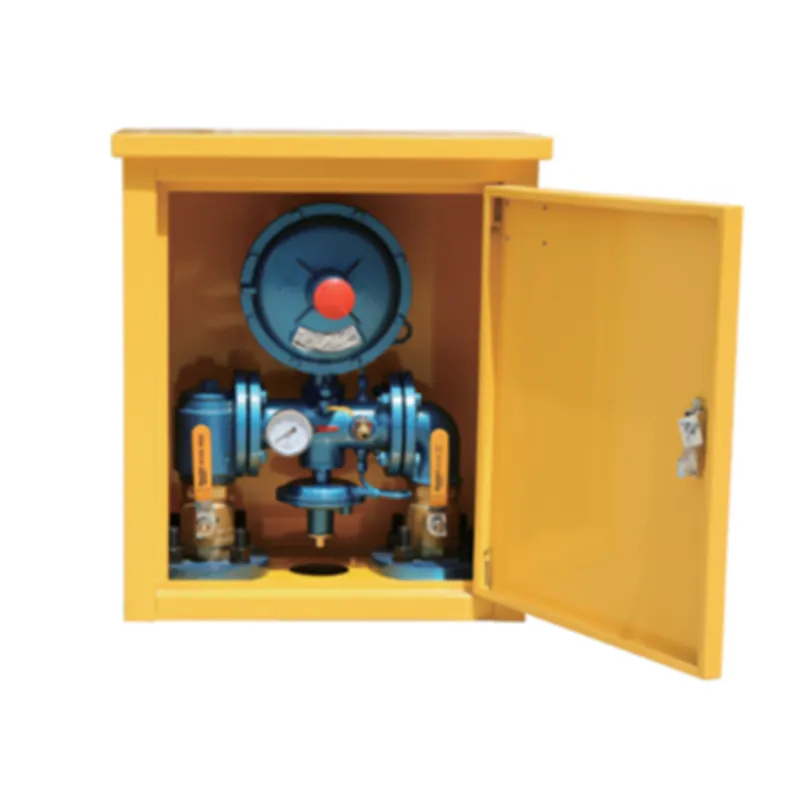
Dec . 23, 2024 07:50
Back to list
Understanding the Functionality and Applications of High Pressure Regulators in Various Industries
Understanding High Pressure Regulators A Comprehensive Guide
High pressure regulators play an essential role in various industrial and commercial applications where precise control of gas and fluid pressure is crucial. These devices are designed to reduce the high inlet pressure from gas cylinders or storage tanks to a lower, more manageable outlet pressure, ensuring safe and efficient operation. This article delves into the workings, types, applications, benefits, and considerations of high pressure regulators.
What are High Pressure Regulators?
A high pressure regulator is a mechanical device engineered to maintain a constant output pressure despite fluctuations in the input pressure. Typically, these regulators are designed for systems that operate at pressures above atmospheric levels, often dealing with gases such as oxygen, nitrogen, helium, and natural gas. The primary function of these regulators is to protect downstream equipment and improve overall system performance by providing a steady flow of gas or fluid.
How Do High Pressure Regulators Work?
At its core, a high pressure regulator operates by utilizing a diaphragm, spring, and valve mechanism. When high-pressure gas enters the regulator, it forces the diaphragm to move against a spring that is calibrated to a specific setpoint. As the diaphragm moves, it opens or closes the valve to either allow more gas to flow through or restrict it, thereby maintaining the desired output pressure. This feedback loop between the diaphragm and spring ensures stable pressure delivery regardless of variations in the input pressure or flow demand.
Types of High Pressure Regulators
High pressure regulators come in several types, each tailored for specific applications
1. Single-Stage Regulators This type directly reduces high inlet pressure to a lower outlet pressure in one step. It is commonly used in applications where precise pressure control is not critical.
2. Two-Stage Regulators These devices reduce the high pressure in two stages, offering greater stability and precision. They are ideal for applications requiring tighter pressure control, such as welding or laboratory experiments.
3. Relief Valve Regulators These regulators incorporate a safety feature that vents excess pressure, ensuring the system stays within safe operating limits.
high pressure regulators

4. Specialty Regulators Some applications require custom solutions, leading to the development of specialty regulators designed for specific gases or extreme conditions, such as high temperatures or corrosive environments.
Applications of High Pressure Regulators
High pressure regulators are utilized across various sectors, including
- Manufacturing In processes like welding, cutting, and material handling, regulators ensure consistent gas delivery for optimal performance. - Medical Medical gas regulators manage the supply of gases like oxygen to patients, ensuring accurate dosage and pressure. - Research and Development Laboratories often require precise pressure control for gas chromatography, mass spectrometry, and other scientific applications. - Energy Natural gas and other fuels are commonly regulated within pipelines and storage systems to maintain safety and efficiency.
Benefits of Using High Pressure Regulators
1. Safety By controlling pressure, regulators prevent over-pressurization, reducing the risk of equipment failure or accidents. 2. Efficiency High pressure regulators optimize the flow of gas, enhancing system performance and reducing waste. 3. Precision They enable exact pressure settings, vital for applications where measurement accuracy is critical. 4. Versatility With various designs and configurations, these regulators can accommodate diverse gases and operational requirements.
Considerations When Choosing a High Pressure Regulator
When selecting a high pressure regulator, it’s important to consider several factors
- Pressure Range Ensure the regulator can handle the required pressure levels for your specific application. - Flow Rate Assess the flow capacity to determine if it meets your operational demands. - Compatibility Verify that the materials used in the regulator are compatible with the gases or fluids being regulated. - Safety Features Look for built-in safety mechanisms, such as relief valves, to enhance operational safety.
Conclusion
High pressure regulators are vital components in ensuring the safe and efficient operation of systems reliant on gas or fluid pressure. By understanding their functionality, types, applications, and selection criteria, industries can better integrate these essential devices into their operations, enhancing performance and safety. As technology advances, the design and capabilities of high pressure regulators will continue to evolve, further solidifying their role in a variety of applications.
Next:
Latest news
-
Safety Valve Spring-Loaded Design Overpressure ProtectionNewsJul.25,2025
-
Precision Voltage Regulator AC5 Accuracy Grade PerformanceNewsJul.25,2025
-
Natural Gas Pressure Regulating Skid Industrial Pipeline ApplicationsNewsJul.25,2025
-
Natural Gas Filter Stainless Steel Mesh Element DesignNewsJul.25,2025
-
Gas Pressure Regulator Valve Direct-Acting Spring-Loaded DesignNewsJul.25,2025
-
Decompression Equipment Multi-Stage Heat Exchange System DesignNewsJul.25,2025

